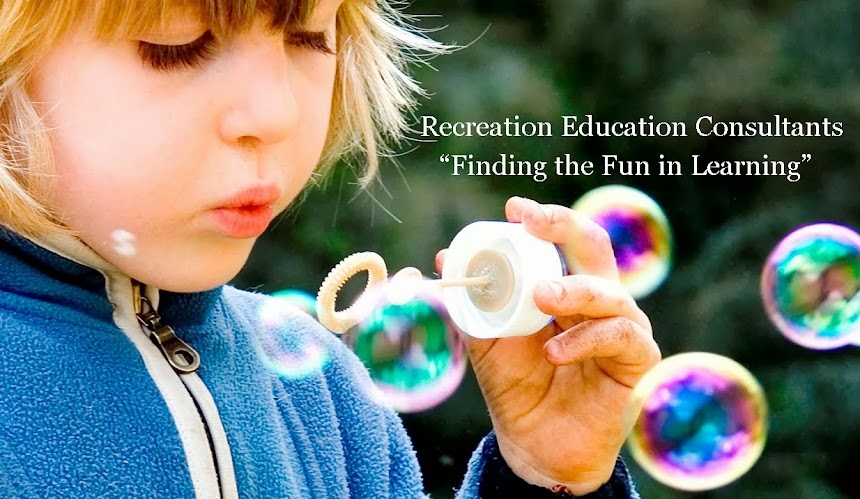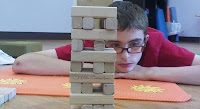Which sounds like more fun: relaxing quietly in lotus pose on a yoga mat or gliding smoothly above the clouds on a magic carpet? Performing Warrior 3 pose or spiraling through deep space in an X-Wing Fighter? Reaching towards your toes in a seated forward bend or steering a speeding Jamaican Bobsled through an icy winding track ?
Most adults give up exercise after an enthusiastic start simply because we are bored. Sure, we know its good for us and it helps us stay strong and healthy. We tell ourselves its because we just don't have time/money but the real reason we give it up is because its not compelling, interesting nor is it any fun.
At our deepest core, we don't want to work hard at exercising & staying healthy. We literally want our cake and to eat it [all] too. If we knew we could stay healthy, build muscle, reduce cholesterol and lose weight by posting jokes on Facebook, or Re-Tweeting a flour-less brownie recipe, or "Pinning" a photo of our kid's dance recital, well then we'd do it all day long, because what we all really want is to have it easy, to play, to laugh & to be entertained. Yet, when our children don't want to eat 'healthy' foods or do their homework, or 'exercise', we get frustrated and scratch our heads as to why. We don't need to wonder. Its because they want the same things we do: to not work hard, to play, to be entertained & to have fun!
When we tell our children "Time to exercise," it sounds too much like a threat to their fun-and suspiciously like "work" so they will do everything in their power to avoid it. But if you tell them you are going to see how good they are at playing "Simon Says"-now they might sense the implied challenge and take you up on that. So now as Simon you can direct their activities-hopping 10 times on one foot, swaying like a tree, jumping like a frog as high as they can, etc. The "exercise" is now hidden in the game and games=fun.
Finding the fun in movement is not difficult. It requires that you know and understand your child and children in general, and it requires a little bit of being like a child yourself. Be willing to be silly, creative & vulnerable by taking a few minutes to not take yourself or exercise so seriously and just play with your children.
Teachers & therapists can incorporate movement into any classroom or lesson. I know there are core standards and lesson plans and procedures and policies to follow, but find a way to work the fun into what you are already teaching rather than feeling like you have to squeeze in a completely new & unrelated activity. Yes, the kids get gym and recess (some do) but they still need to move throughout the day. Movement improves learning readiness by releasing stress and tension, integrating the senses and strengthening the connections in both sides of the brain for better concentration.
So how do we find the fun and easily incorporate it into our day?
Easy Ways to Incorporate Fun Movement Activities into a Child's (or Your) day:
- Simon Says: Play just as described above. Each day allow a different student to be "Simon". No one gets "out". Its just for fun!
- Leap Day: Have a fun and friendly competition to see who can Leap the farthest. Place a piece of masking tape on the floor or carpet (or make one outside with chalk) and mark off in 1 foot increments. Mark off a starting line and have them each take turns and leap! (best out of 3 or just one big leap. ) Give them cloth tape measures to calculate how far each student has leaped. Give a prize for the longest and shortest leap,or give a prize to the class for cooperating. (If you do this, be sure each student gets a prize and no one gets left out "because you were talking" or it defeats the whole purpose of the cooperative activity.) *(With this activity you just taught math concepts, teamwork and helped release muscle tension.)
- Hopscotch: You can again use masking tape if you don't have access to an outdoor play area. Have the children make chalk hopscotch boards. Use stones or pennies for markers. Each child completes the game by moving their marker to each block. *( You just reinforced counting & math skills, concentration, turn taking, visual processing, hand-eye coordination and helped release muscle tension.)
- Hooping: Lots of ways to use the hoop. The regular way we hoop, or rolling the hoop to a classmate and back again. You can also have the children jump in and oput of a hoop in patterns (left, right, forward, back, one foot, etc.). , My favorite way is to make a large circle with many hoops. (Preferably outside on grass) Play some music, and have children move from hoop to hoop. When the music stops, everyone must be inside a hoop. Remove one hoop and play again. each time the children must "share" a hoop with the classmates so no one is "stuck" out of the hoop. Continue play until there are only 3, 2 or 1 very large hoop left and every child has at least one foot inside the hoop. Children must not push or shove. *(You just taught motor planning, balance, sharing, cooperation, body awareness, how to stand still in a group, listening skills and problem solving.)
- Interactive Storytelling: Take a few minutes and read (or tell) a story to the class and have each student "act out" a character or a action in the story through movement. Many stories, myths, legends and fables exist about animals and have many opportunities for yoga postures or creative movement to be incorporated. Not only is this a fun way for children to remember a concept or a story sequence, but it is also a good way to start introducing new science concepts. Yuo can even apply some of these concepts to video games scenarios to make it more relevant to what children are familiar with. *(You reinforced literacy and language skills, listening /auditory processing, helped with learning transitiining skills, released stress and engaged the whole child in learning.)
NASPE ( National Association for Sport and Physical Education ) recommends that school age children get at least 60 minutes of movement each day, and do not sit for periods of more than 20-30 minutes. (I know there are second graders expected to sit for periods of 80 minutes and listen!) If we lean to use our children's natural enthusiasm, movement rhythms, imaginations and energy cycles, we can harness this energy properly and direct it in postive and effective ways for everyone. It does not have to be difficult nor over-structured. All we have to do is find the fun in movement
*What are the ways you make exercise/movement fun for you or your students? Leave a comment below!
.


















